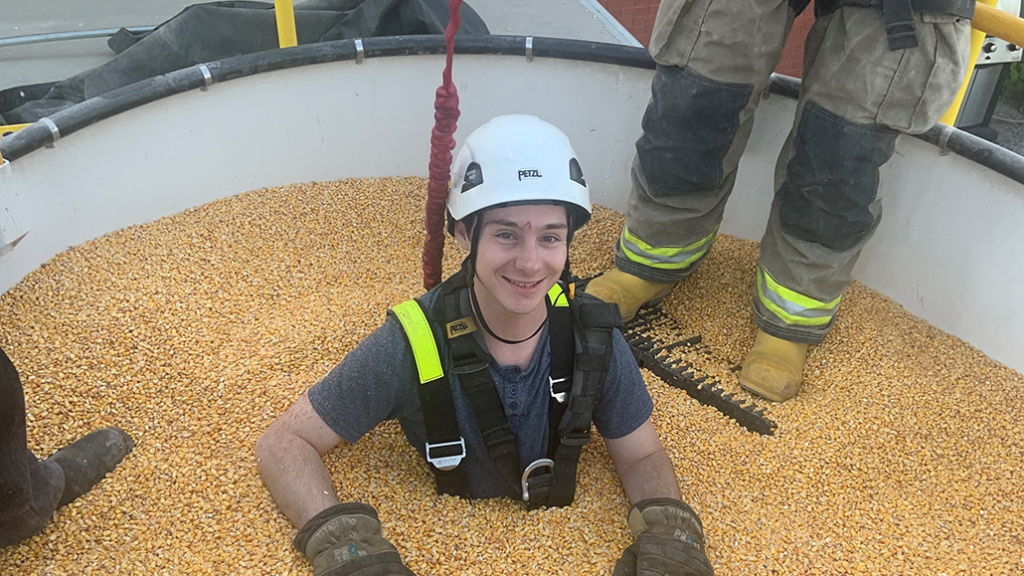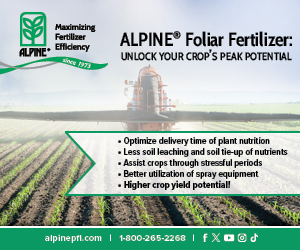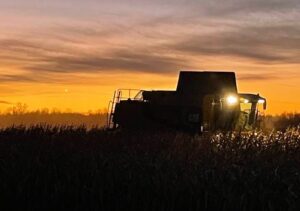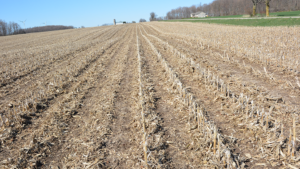Respect the dangers
SAFETY REMINDERS FOR HARVEST

WHEN THE FARM is both a home and a place of business, farmers need to be vigilant to keep their families and workers safe. During the rush of harvest time, it is important to take the time needed to operate equipment safely and use safe practices around flowing grain.
Sheila James, a health and safety consultant with Workplace Safety & Prevention Services (WSPS), wants farmers to keep two things top of mind this fall.
“A farmer needs to know the danger of flowing grain so that you can advise your family and your workers of those dangers, and you need to know how to rescue someone that is trapped in grain.”
If you have on-farm grain storage, James says to make sure you tell your workers not to go into a grain bin, “but if you do have to go into a bin, make sure no one is going to turn the auger on — put a lockout on.”
Communication is key, so everyone knows where others are. Having someone outside the bin to monitor your well-being and respond quickly to any incident could also be life-saving. However, James notes that if a grain entrapment occurs, help may take longer than expected to reach a victim.
“When we phone 911, we assume the fire department will come to the rescue, but there are so many fire departments that don’t have confined space training. If they have to call for backup, it could be another hour before help arrives,” says James.
Recently, there has been a push to train rural first responders for grain entrapment situations. Local safety associations, agri-businesses, and 4-H clubs have partnered to increase awareness during safety demonstration days, support training, and raise funds to purchase rescue cofferdams.
“Fire departments and farmers need to train and work together to know how to rescue someone from a grain entrapment,” says James.
She recommends farmers take confined space training, a course offered by WSPS, which highlights the need for a written hazard assessment, an entry procedure, and a rescue procedure for any confined space. The course provides a better understanding of the equipment (such as harness and tripod) and the whole plan needed to rescue someone from a confined space — such as a person trapped in grain.
PREVENTION
Of course, prevention is always the first response. Community outreach is an important part of James’ work. With fairs and events returning to in-person, she is happy to be back where the farmers are. In particular, she likes to see when parents push their children towards her flowing grain display. The plexiglass mock-up of a grain wagon shows what happens to a person once a gate is opened and grain starts flowing. How quick the action figure is sucked down into the grain is always a shock.
“Their eyes will pop, and their mouths will gape open,” says James, describing the typical reaction of children. “They just can’t believe it.”
James hopes that reaction to the demonstrations sticks with them and that the children have a lasting understanding of why their mom or dad will tell them about the dangers on the farm.
“I remember when I was a little kid, and my parents told me, ‘don’t go in where the grain is.’ I knew there was something bad — but I didn’t know what or why. I only knew that going in where the grain was, was bad,” remembers James. “But with the demonstration that I show them, they can understand the why; why going into grain is a danger.”
More information on the responsibilities of a farm employer to ensure a safe work environment is available at www.wsps.ca/ farms-with-paid-employees. Information on grain bin rescue training is available from the Canadian Agricultural Safety Association www.casa-acsa.ca/en/ begrainsafe/. •




















